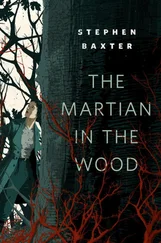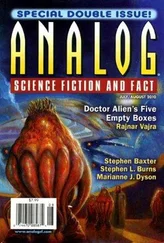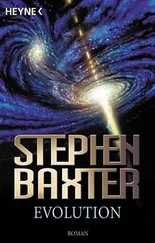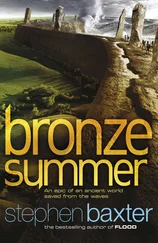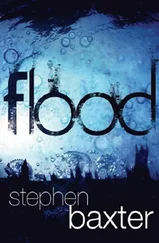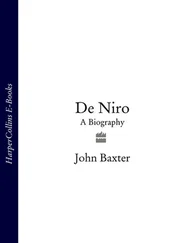During this trip, Spielberg experienced a close encounter of his own that was to have far-reaching effects on his work. He found himself in a remote, old-fashioned hotel in Jefferson, Texas, with Diane Bucker, head of the Texas Film Commission, and Elliot Schick, the film’s production manager (and later producer of The Deer Hunter ). Around midnight, as he undressed, he kept glimpsing a figure from the comer of his eye, though it disappeared as he tried to focus on it. A moment later, the entire room went cold, especially around the four-poster bed. Panicked, Spielberg roused the others and, pausing only to snap some flash pictures, fled. Bucker’s new Mercedes refused to start, so a mechanic was called. Once he had it going at 1.30 a.m., they drove sixty miles to the comforting anonymity of a Holiday Inn. Spielberg disavows any belief in the supernatural, putting such phenomena down to the power of suggestion. What the incident most resembles, in his retelling, is a movie, and in particular a favourite of his, Robert Wise’s 1963 version of Shirley Jackson’s The Haunting of Hill House , which he called The Haunting . True to form, Spielberg recycled the experience in Poltergeist , another demonstration that in his universe everything, even the incorporeal, aspires to the condition of film.
As shooting loomed on Sugarland , he began choosing his team. He persuaded Verna Fields to take leave from USC to edit. Carey Loftin again planned the stunts, using one of the Corvettes he and Max Balchowski rebuilt as camera cars for Bullitt . Finding a cameraman was harder. Since he’d be shooting in winter, and on the open road, often in bad light, Spielberg needed the best. ‘Visually wooed,’ he said, ‘by the thought of all those cars,’ he wanted, as on Duel , to put his audience into them, like kids on a fairground ride. To do that, a cameraman had to be intimate with Robert Gottschalk’s spherical-lens Panavision cameras which, although they had only a shallow depth of field, allowed one to shoot on a wide-angle lens without distortion. In particular, he wanted to use the Panaflex, its lightweight and noiseless version, inside the cars.
He chose Vilmos Zsigmond, whom he’d met through McElwaine and Altman. A Hungarian with a massive ego, Zsigmond had bribed his way to the West with watches in 1956, bringing with him footage of the Soviet invasion. Within a decade he’d become one of Hollywood’s best cinematographers, with a reputation, earned on films like John Boorman’s Deliverance and Altman’s chilly Western McCabe and Mrs Miller , which Spielberg admired, for shooting in bad light and worse weather.
A few weeks before he began shooting, Spielberg found himself judging a student film competition with Douglas Trumbull, largely responsible for the special effects on 2001: A Space Odyssey , and composers Marvin Hamlisch and Jerry Goldsmith. The young director’s name didn’t register with Goldsmith, but Spielberg was so familiar with Goldsmith’s themes for series like Thriller and The Twilight Zone , and for Planet of the Apes and Patton , that he could hum long stretches of the music. He flirted with asking him to write the score for Sugarland , but opted instead for John Williams, who, though less inventive than Goldsmith, could be relied on to turn in a score squarely in the Hollywood vernacular.
Williams’s Sugarland music would indeed be consensus composing by a master pasticheur . ‘I wanted John to do a real symphony for this film,’ says Spielberg, ‘but he said, “If you want me to do The Red Pony or Appalachian Spring , you’re going to ruin your movie. It’s a very simple story, and the music should be picking and soft, with just a few violins and a small orchestra; cradle-like.”’ He used Dutch harmonica virtuoso ‘Toots’ Thielmans to enliven fragmentary music of a folksy simplicity. Working with Goldsmith, however, became an ambition for Spielberg. ‘I heard,’ says Goldsmith, ‘that Steve and Zanuck tossed a coin to decide between me and Williams to score Jaws .’ Coincidentally, Goldsmith also did the music for Ace Eli and Rodger of the Shies , but still didn’t associate its author with his fellow panellist.
From the start, the logistics of Sugarland promised the most problems. Universal’s technical departments helped Spielberg visualise the action by building models of locations like the used-car lot so he could plan his shooting with military precision. An artist sketched every scene in storyboards which he took to Texas and taped around his motel room – ‘so I could see exactly what the film would look like from a bird’s eye view… I always had a visual overview in terms of day-to-day shooting.’
A hundred cars participated in the original chase. Universal’s publicity claimed the film used 250, failing to mention that this included the crew’s private cars and support vehicles. In fact only forty appeared on camera, and even that number threatened to be unwieldy. Richard Zanuck arrived on location the first day with trepidation.
I was thinking, well, let’s take it easy. Let’s get the kid acclimated to this big-time stuff. But when I got out there the first day he was about ready to get this first shot, and it was the most elaborate fucking thing I’ve ever seen in my life. I mean tricky; all-in-one shots, the camera going and stopping, people going in and out. But he had such confidence in the way he was handling it. Here he was, a young little punk kid, with a lot of seasoned crew around, a major actress on hand, and instead of starting with something easy, he picked a very complicated thing that required all sorts of intricate timing.
And it worked incredibly well – and not only from a technical standpoint, but the performances were very good. I knew right then and there, without any doubt, that this guy knew more at that age about the mechanics of working out a shot than anybody alive at that time, no matter how many pictures they’d made. He took to it like – you know, like he was born with a knowledge of cinema. And he never ceased to amaze me from that day on.
Zanuck was right about the shooting, but charitable about the performances. Then, as later, nobody got much direction from Spielberg, who simply outlined the action and let them provide the characterisation. ‘The most I ever heard him say before a take,’ recalls one actor in his later films, ‘was, “Lots of energy” – which is what directors always say when they don’t know what they want. And afterwards he said, “A nice sense of reality.”’
Paul Freeman remarks diplomatically, ‘Steven is one of those people who do their direction of actors in the casting. They trust the performer to know his or her business, and to get on with it. On Raiders , he knew Karen Allen and I were from the stage and were used to rehearsing, so he sent us off to improvise. When we came back and showed him, he said, “Fine.” All that stuff in the tent between Karen and me was made up like that.’
Casting was, and is, agony for Spielberg. He often chooses actors from tests shot on his behalf, and almost never talks to the performers until they arrive on the set. ‘Steven goes with his nose,’ says Julian Glover, the villain of Indiana Jones and the Last Crusade . He looks for performers who physically resemble his conception of the character and who have enough experience not to need direction. Wayne Knight arrived in Hawaii to play the fat computer hacker and embryo thief Nedry in Jurassic Park without having met him.
I got out of the van, walked up to him, and said, ‘I hope I’m the guy you wanted.’ He said, ‘Yeah, you are.’… So I get in the Jeep, and Steven gets in the Jeep, and here we are, me and Steven Spielberg sitting in this Jeep. I had never had so much as a conversation with him, and it was like, ‘So how about those Mets?’ I had no idea what to say.
Читать дальше

